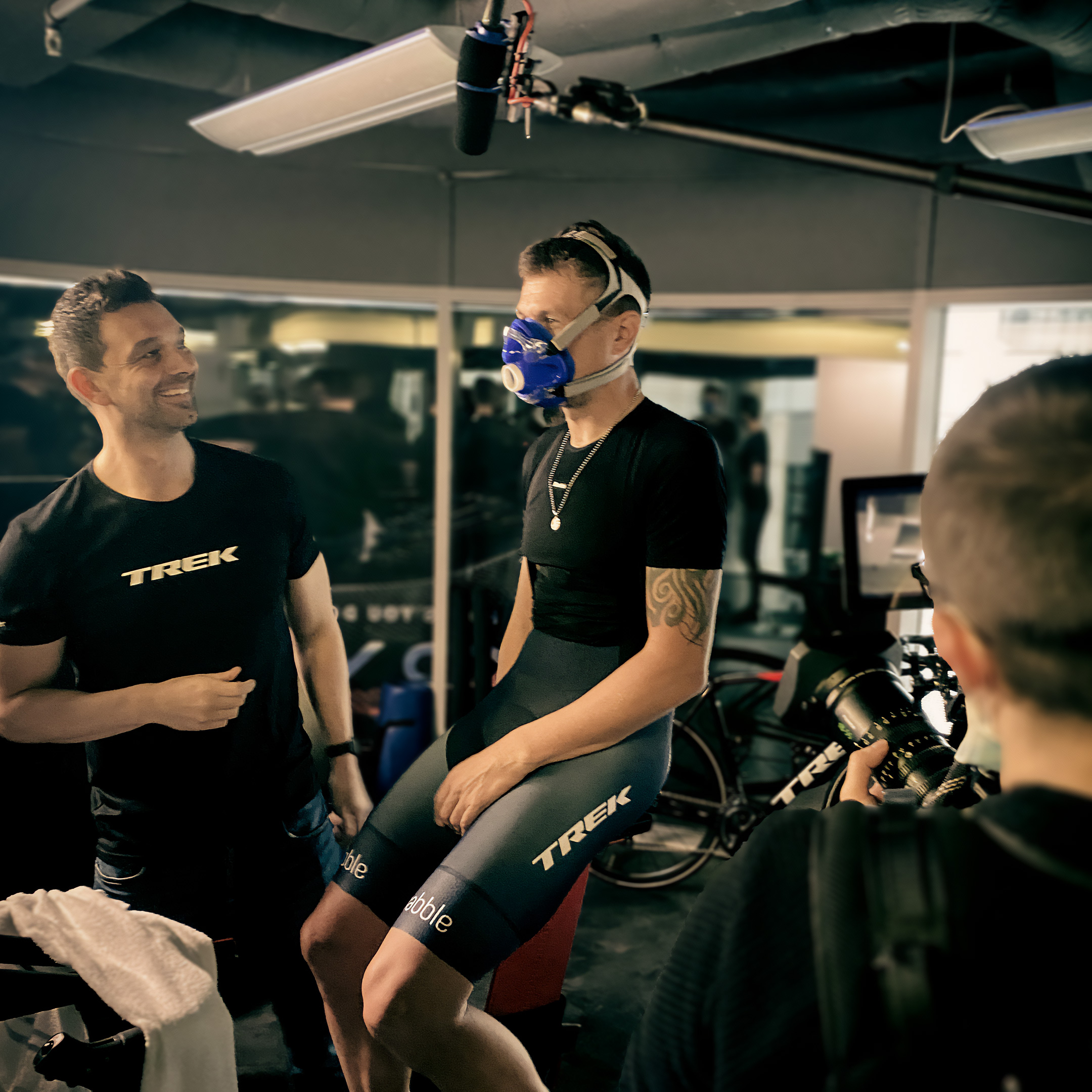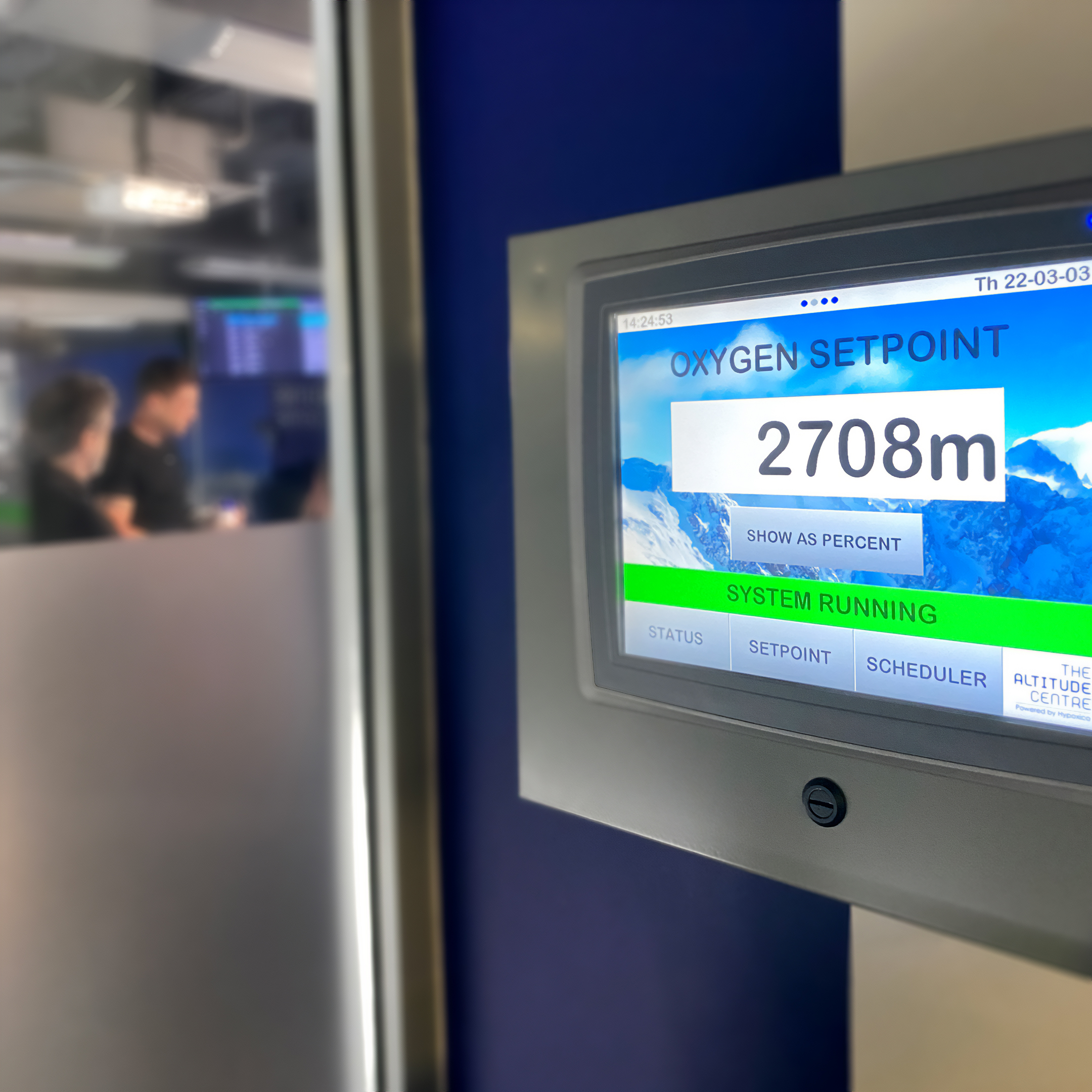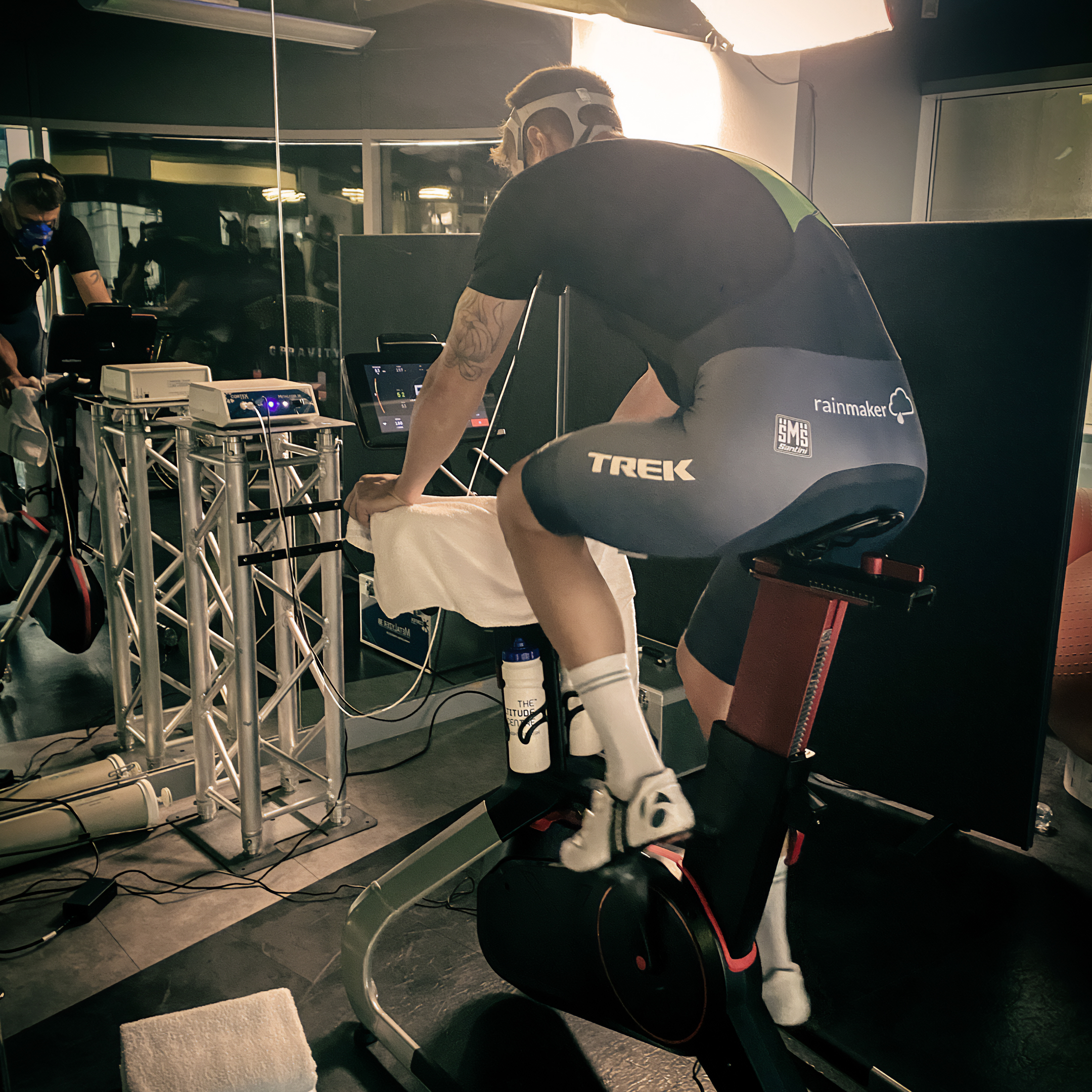- James Golding: Road to RAAM
- 2 July, 2023
- Trek
Have you ever considered testing at simulated altitude? If not, you might want to start! Testing at altitude can be an effective way to improve your cycling performance.
What is altitude testing?
The reduced oxygen levels at altitude force your body to work harder to get the oxygen it needs, which can increase your red blood cell count and improve your overall endurance. This can lead to better performance on the bike, both in terms of speed and stamina.
James (Golding), who competed in the gruelling Race Across America, trained at the simulated Altitude Centre London to prepare for the race. By testing at altitude, he was able to measure his endurance and handle the challenges of the long-distance race which Starts in Oceanside, under one of the longest piers in California, RAAM (Race Across America) spans 3000 miles, climbs 175,000 feet, crosses 12 states and finishes at City Dock in Annapolis, Maryland, on the east coast.



Witness James and his coach Dean Dowling’s preparation for the race across America at the Altitude Centre in London. Here, they are undergoing testing in a simulated high-altitude environment with the guidance of exercise physiologist Richard Tucker and performance specialist Nick Hart. Through this process, they are gathering essential data and creating baseline measurements to optimise James’s training and nutritional strategies for the race.
“We’ve learned a lot today about how fit James is. He’s a lot fitter than we would have thought, really, so that’s good.” Dean Dowling
Here are some benefits of training at altitude:
• Improved Endurance: Training at altitude can increase your body’s ability to use oxygen efficiently, which can lead to improved endurance during exercise.
• Increased Red Blood Cells: Exposure to high altitudes stimulates the production of red blood cells, which carry oxygen to the muscles. This increase in red blood cells can improve athletic performance.
• Faster Recovery: Some studies suggest that training at altitude can improve post-exercise recovery time.
• Mental Toughness: Training at altitude can be physically and mentally challenging, and can help build mental toughness that translates to other aspects of life.
• Boosted Confidence: Successfully training at altitude can give athletes a sense of accomplishment and boost their confidence in their ability to take on challenging workouts and competitions.
Get inspired for your next cycling challenge and beyond by following James Golding on Instagram. With his passion for cycling and his experience in ultra-endurance events like the Race Across America, James is sure to motivate and inspire you to push beyond your limits. Join his community of like-minded cyclists and get ready to take on your next challenge with enthusiasm and determination.
Note: Training or Testing at high altitude can provide various physiological benefits, but it may not be suitable for everyone. Individuals with certain medical conditions or at risk of altitude sickness should consult with their healthcare provider before attempting to train at altitude. Additionally, it’s important to properly acclimate to the altitude and gradually increase training intensity to avoid potential health risks. The information provided in this article is for educational purposes only and should not be considered medical advice. for more information and advice about the altitude centre London, visit altitudecentre.com.

About the Author: Trek
Our mission: we build only products we love, provide incredible hospitality to our customers, and change the world by getting more people on bikes.







